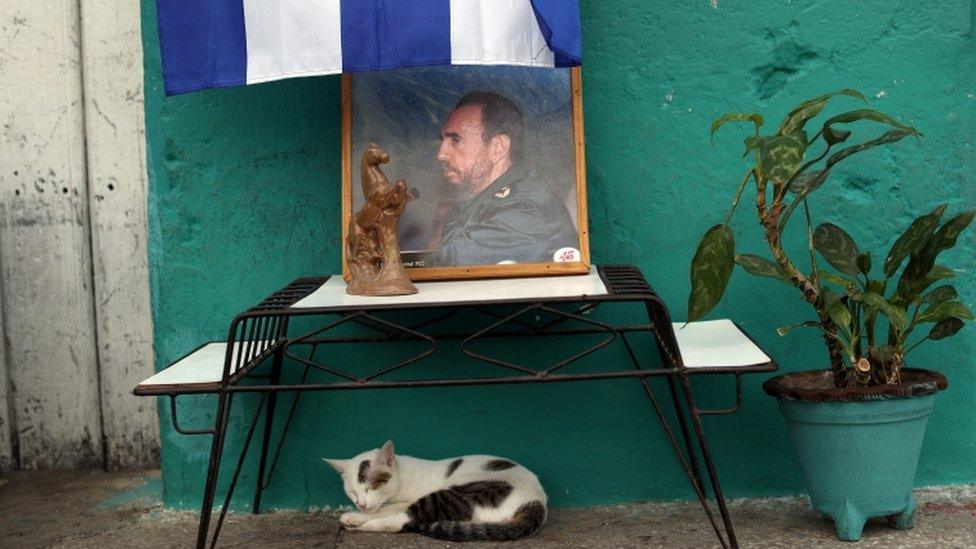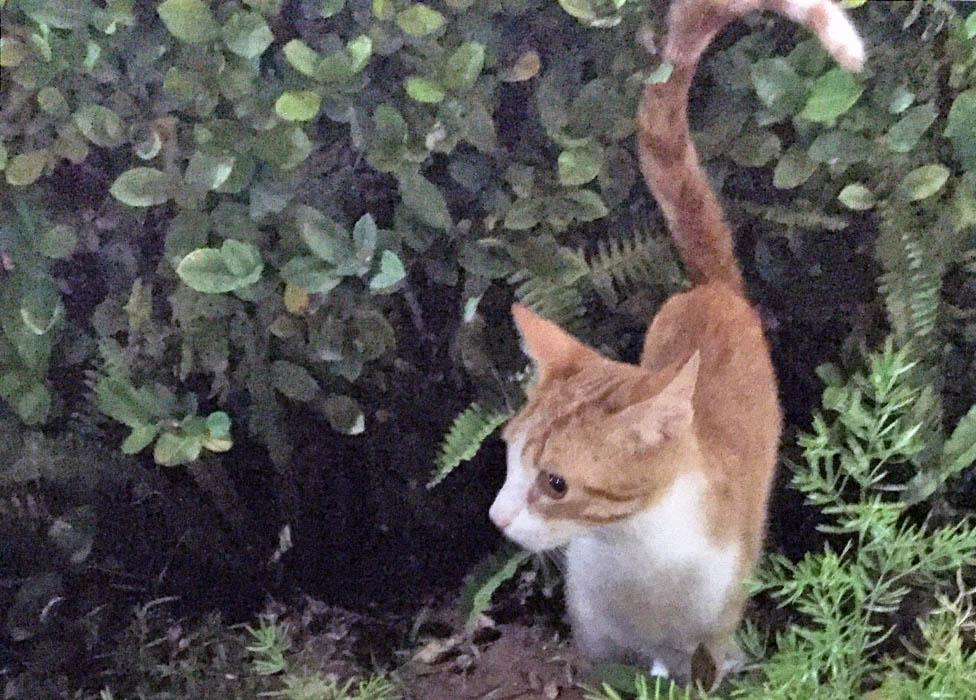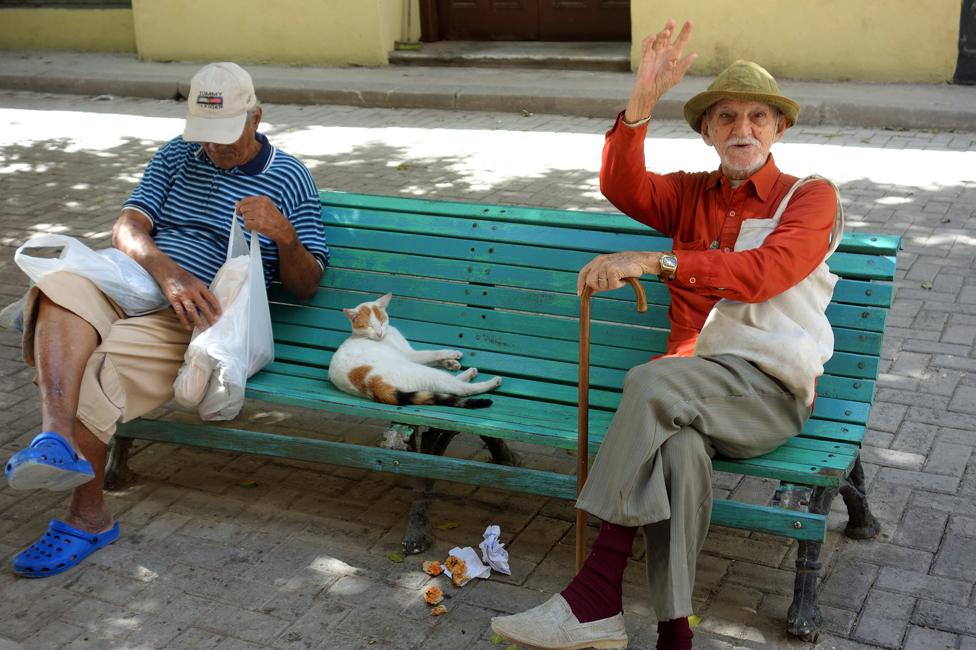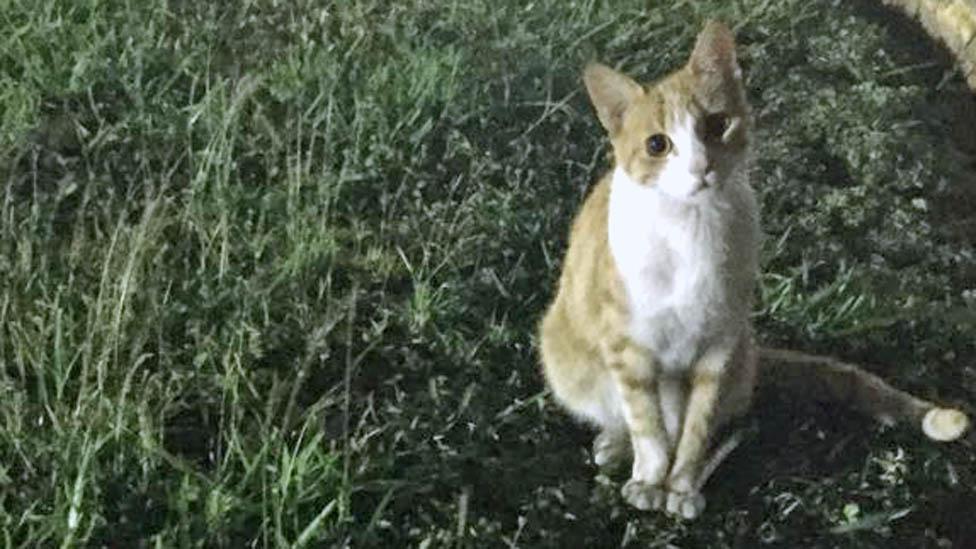Our cat in Havana
- Published

In Cuba's capital, armies of stray cats and dogs prowl the streets. The state does little to look after them, so responsibility lies with the public - as Will Grant found when he befriended a ginger tomcat.
My younger sister sometimes reminds me of the apparent indifference I showed when our family cat, Pippit, died in 1991. A slender tabby who lived well beyond her expected years, Pippit enjoyed a long and happy life with us. Finally, at the impressive age of 21, she died just as we returned from a family holiday.
Waking up to find that Pippit hadn't lasted the night, I took it upon myself to break the news to my sister. Sensitivity and tact weren't exactly high in my repertoire when I was 15 - I simply crashed into her room with the line: "Helen, the cat's dead!"
I don't know if you've ever seen anyone wake up and immediately burst into tears, but I should take this opportunity to apologise to Helen for what was probably the meanest thing I did to her when we were growing up.
So, given she has this image of me as callous when it comes to pets - unfair, I hasten to add - she was surprised, when she visited Havana recently, to find just how much Cuba has influenced my attitude towards animals.
There are no state-funded pet rescue organisations on this communist island, so caring for neighbourhood strays is down to local businesses or residents.
Around a dozen state institutions, from the Central Bank to the Museum of Metalwork, have adopted their own stray dogs. Under the scheme, the homeless hounds are named and duly issued with ID cards, which are placed on their collars to save them from the dog-catcher.

Vladimir, a former street dog, with his ID collar in Havana
The adoption system operates under the premise that they are now officially considered the government buildings' guard dogs, although the ones I've seen are docile street mutts rather than fierce Rottweilers.
The city government does operate a programme for neutering and spaying strays in Old Havana, but the handful of voluntary animal protection organisations that exist simply can't deal with the sheer numbers across the island.
Cubans are by and large dog people. There is a pretty significant culture of dog ownership, even among those who are barely scraping by.
Cats, on the other hand get a raw deal. Especially stray ones.

So, since we arrived in Cuba, we've tried to do our bit. We've already taken in two kittens we found lost and half-drowned during a torrential downpour one night. My girlfriend's mother is now the proud owner of the uniquely named Honorato and Carilda.
But for my sister, on her recent visit, it was my relationship with Django which really stood out.
A ginger-and-white tomcat, he started life inside our building's parking garage. We would often hear a faint mewing after we parked the car.

Django
As a kitten, Django would hide deep inside the motor of some diplomat's SUV, seeking refuge by nestling near the carburettor.
Once he grew a bit and emerged from the darkness of the car park, he was almost instantly adopted by the building.
We would leave food out for him. As would some Russian neighbours. So, apparently, did Sindi, one of the doormen. He looks like he could find a second job as a nightclub bouncer, but fell for the scruffy, soot-stained Django as much as we did.

Find out more
From Our Own Correspondent has insight and analysis from BBC journalists, correspondents and writers from around the world
Listen on iPlayer, get the podcast or listen on the BBC World Service or on Radio 4 on Thursdays at 11:00 BST and Saturdays at 11:30 BST

Django was the name my Mum gave the kitten when she came to Havana and it stuck. We were smitten.
Evenings would be interrupted and conversations broken off mid-flow so we could go out and feed him a mixture of leftovers and expensive kibble specially brought in from Mexico.
The treatment Django received in our building was well above the experience of most alley cats in Cuba with food regularly provided - if not by one neighbour, then another. Sometimes, both.
That brought with it the inevitable interest of other local waifs and strays. At one time there were three or four more trying to get in on the act. Fair enough - it's a dog-eat-dog world out there for a Cuban cat.



Still, we began to worry. There is a nasty habit in Cuba of angry neighbours removing a constantly barking dog or an unsightly stray cat by feeding it mince laced with rat-poison.
Alternatively - almost as cruelly - the witless pet might be shoved into the back of the car, driven out to the countryside and let out on the roadside, far from home. Noisy neighbourhood dog dealt with, even if the owners are now frantic with worry.
In the end, nothing like that befell poor Django. It was a far more inevitable fate, under the wheels of a car thundering down 70th Street.
The headlines of 2016 were full of high-profile deaths. But spare a thought for one of the year's final victims, taken on New Year's Eve in Havana - a much loved, slightly grubby, ginger-and-white street cat called Django.



Join the conversation - find us on Facebook, external, Instagram, external, Snapchat , externaland Twitter, external.
Follow Will Grant on Twitter @will__grant, external